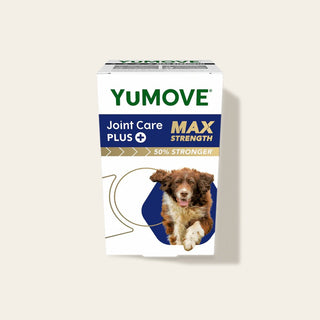

How to cut dog nails
How often should you clip your dog’s nails? Why should you trim your dog’s nails? And just what is a ‘dewclaw’, anyway?
Read on for answers to all these questions, and more.
Why should you clip your dog’s nails?
Regularly trimming your dog’s nails isn’t just about keeping them looking neat and tidy, it’s actually important for their health and happiness.
When your dog’s nails get too long, there can be some serious, negative consequences. These include…
- Your dog’s paw splaying out due to the length of their nails which can cause issues with movement
- Your dog’s paws and tendons can become injured and deformed over time due to poor posture and increased pressure on different parts of their paws and legs
- Ingrown nails, which can injure paw pads and lead to infection
The long story short is that it’s essential to check your dog’s nails on a regular basis and trim them if needed! Try using dog skin & coat supplements to improve nail health.
How do you know when your dog’s nails are too long?
One easy rule of thumb to follow, is that if you hold your dog’s paw flat on the palm of your hand and can feel their nails digging into your skin, it may be time for a trim.
Other tell-tale signs that your dog’s nails are getting too long may include them licking or chewing their paws, or their nails making a clicking sound on solid surfaces when they walk.

How to cut dog's nails
Here’s a quick and easy guide on how to trim your dog’s nails.
- Gently but firmly lift the paw and hold the toe you’re working on, with your thumb on the underside and your forefinger on top (above the nail). Make sure to move your dog’s fur out of the way before starting.
- Press the paw-pad on the underside of your dog’s toe back slightly with your thumb, while pushing your forefinger forward. This will extend your dog’s nail.
- Clip the curved tip of the nail only. Do not clip past the curve, or you may cut into what’s known as the ‘quick’ – the part of your dog’s nail that contains nerves, a blood supply, and living tissue. Cutting the quick will be painful and cause your dog to bleed.
- Repeat for all of your dog’s nails, including their ‘dewclaws’ (which are found higher up on the inner side of the paw).
Some people prefer to trim their dogs’ nails using a safe nail grinding tool. To trim your dog’s nails with a grinding tool, follow the same steps outlined above, but keep these extra points in mind:
- Make especially sure to clear any fur out of the way so it doesn’t get caught in the mechanism
- Start by grinding from the bottom tip of the nail and then gently work your way up
- Carefully use the grinder to smooth out the rough edges of the nail
- Only grind small parts of the nail at a time and be careful to avoid going too far. As before, avoid going past the curve of the nail

Tips to make canine nail-trimming a breeze
It’s important to check and trim your dog’s nails on a regular basis. But not all dogs are head-over-paws about settling in for a pedicure.
Here are a few tips that can help to make trimming your pup’s nails a breeze.
Start trimming when your dog is young
A big part of getting your dog accustomed to having their nails trimmed, without panicking or being uncomfortable, is familiarising them with the process from a young age.
Ideally, you should start getting your dog used to you handling their paws and trimming their nails as early as possible. You can do this by gently picking up and rubbing your pup’s paws on a regular basis, putting gentle pressure on their toes, and opening and closing the clippers near them so they get used to the noise.
When it comes to actually clipping their nails, give them positive reinforcement after each session in the form of praise – and possibly treats – to help them develop positive associations with the practice.
Learn how your dog is most comfortable having their nails trimmed
Some dogs will be more comfortable having their nails trimmed while they sit in your lap, while others will be more at ease sitting on a table. Other dogs may actually need some form of restraint during a nail trimming session, to prevent them from hurting themselves or getting too panicked.
The only way to figure out what works best for your dog, is to experiment and pay attention to their reactions.
Be very careful not to cut the ‘quick’
The ‘quick’ is the part of your dog’s nail that contains living tissue, blood vessels, and nerves. Cutting into the quick of your dog’s nail will cause them pain, and can contribute to a fear of having their nails clipped.
Avoid the quick by only cutting the tips of your dog’s nails, and not cutting beyond the nails’ curves. When you regularly trim your dog’s nails, the quick will recede somewhat over time, making it safer to trim your dog’s nails a bit shorter.
If you do accidentally cut the quick…
If you do cut the quick, don’t panic as this can lead to your dog becoming more stressed. Instead, use styptic powder if you have it, or a damp tissue or towel to help stop the bleeding. It can also help to give them some treats to help distract them.
If in doubt, take your dog to the vet for further assistance.

What about dewclaws?
Your dog’s ‘dewclaws’ are essentially their equivalent to our thumbs – at least when it comes to how they’re positioned.
The dewclaw sits up and to the side of your dog’s paw, and doesn’t make contact with the ground while they’re standing. Some dogs can use their dewclaws to help lightly grip objects that they’re holding in their paws. For other breeds, the dewclaws are very weakly connected to their paws and cannot be used in this way.
As far as nail trimming goes, dewclaws should be managed in exactly the same way as your dog’s other nails. As they do not usually wear down on the floor, they sometimes need extra attention and can appear to 'grow faster' than the other nails, so be sure to check your dog’s dewclaws to!
As well as taking care of your dog's nails, why not also boost their coat growth to really get them looking their best? YuMOVE Skin & Coat Care Boost provides a natural boost for your dog's coat, skin and nails, helping to promote hair growth, aid skin health, and support nail growth.





